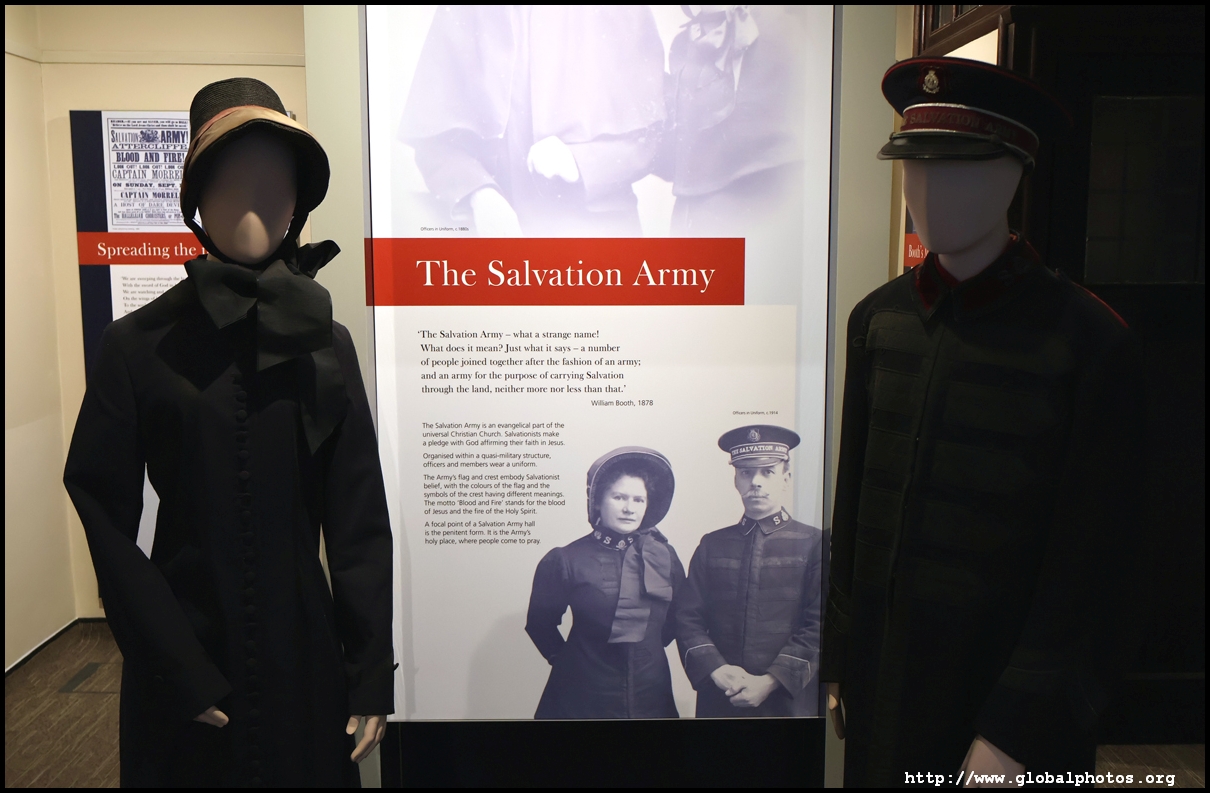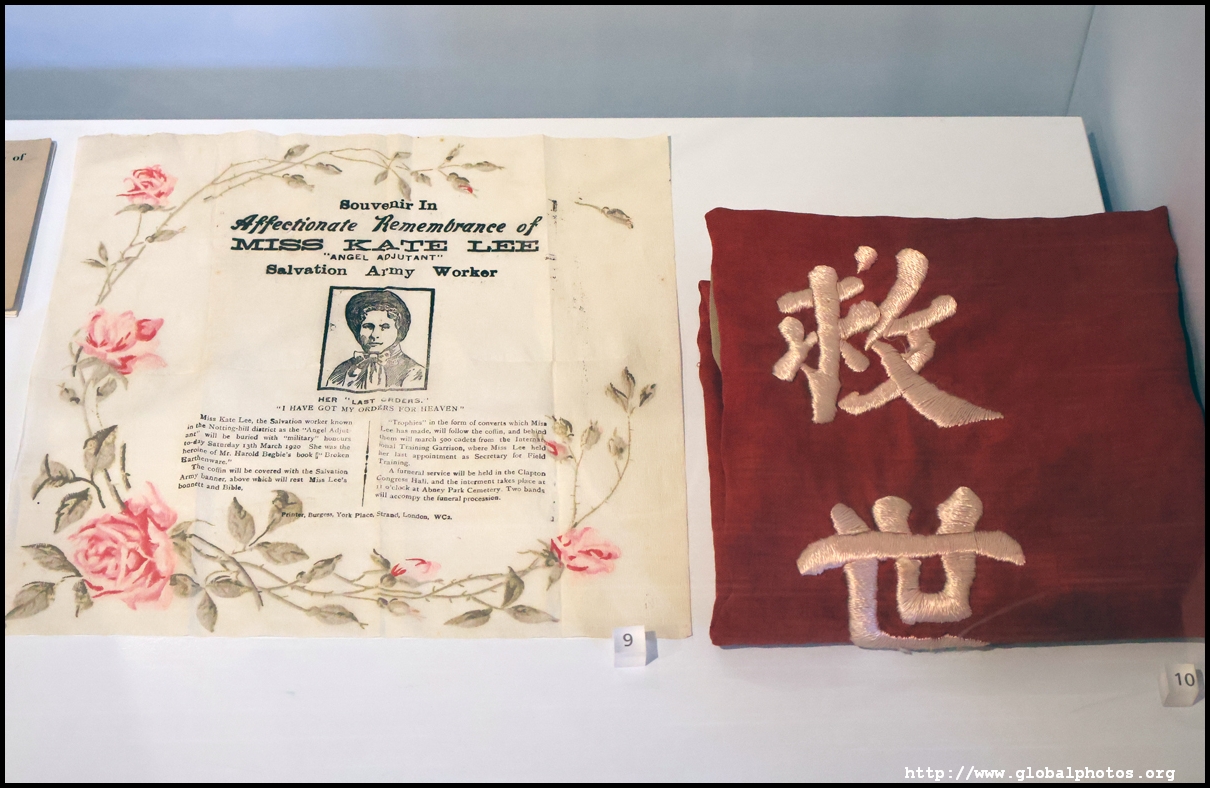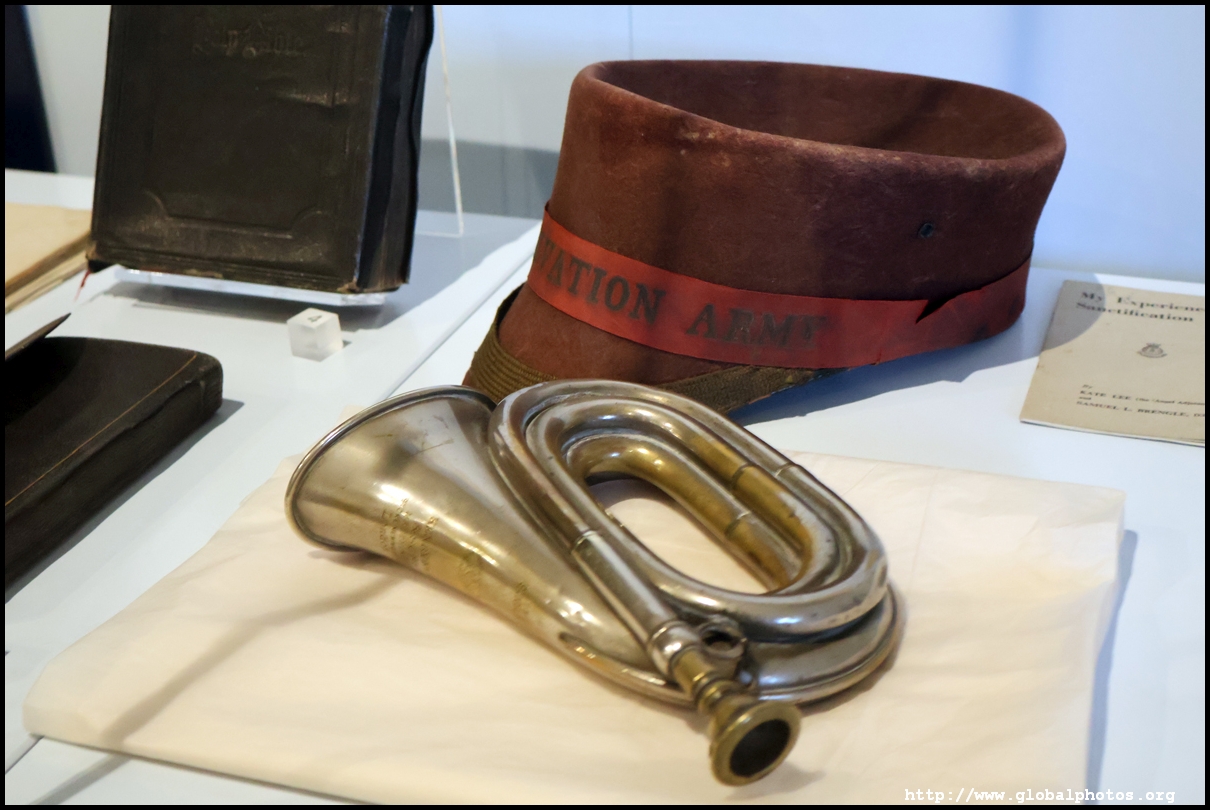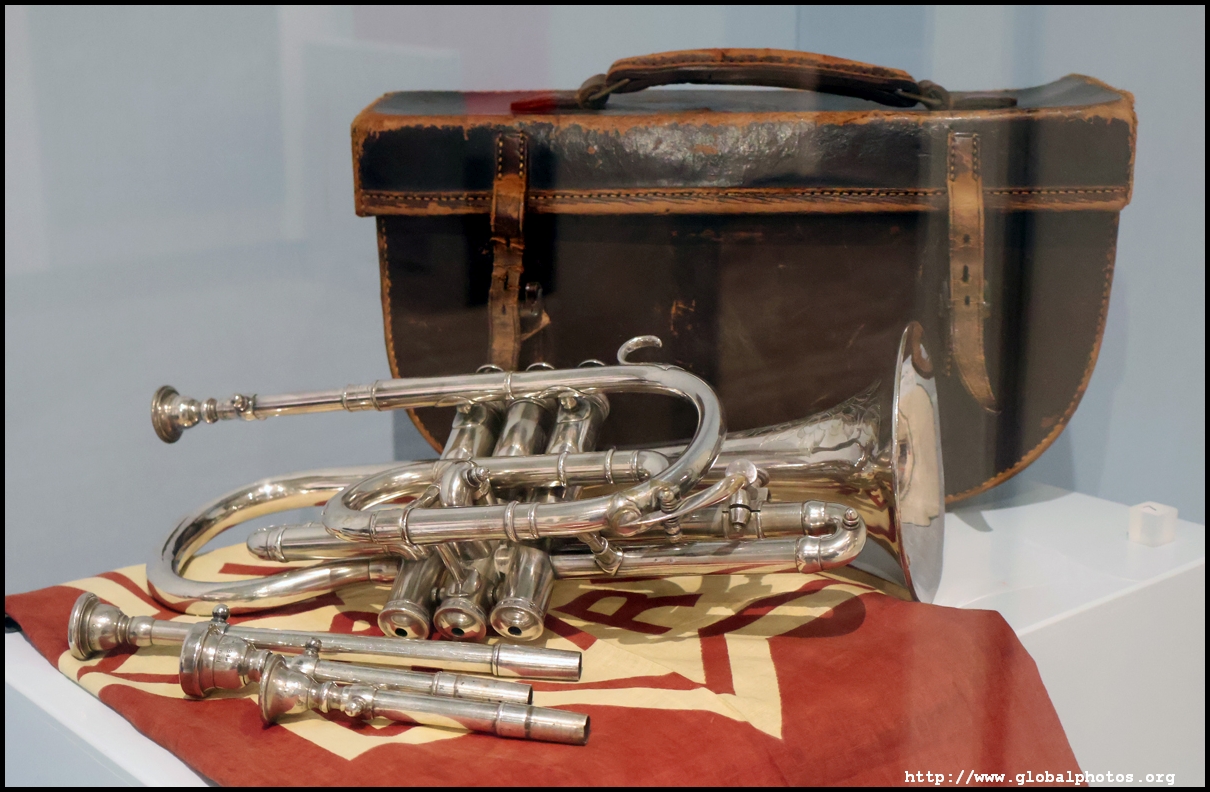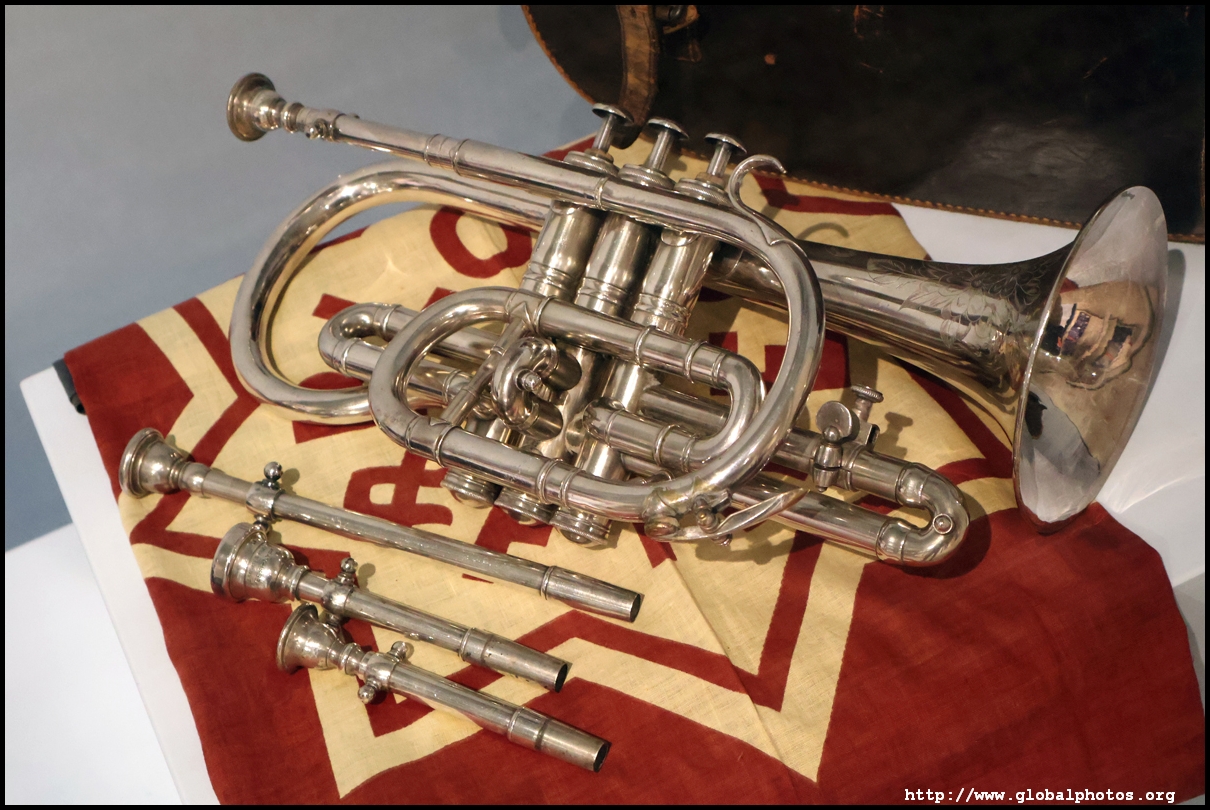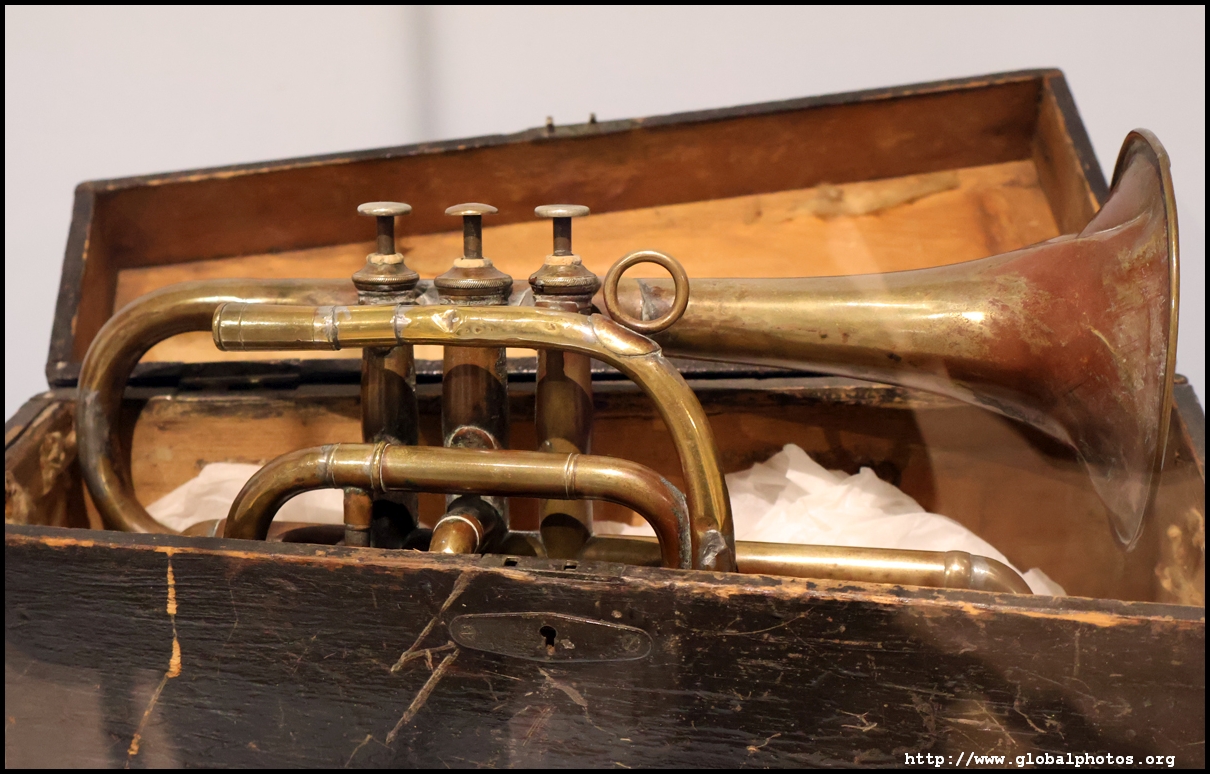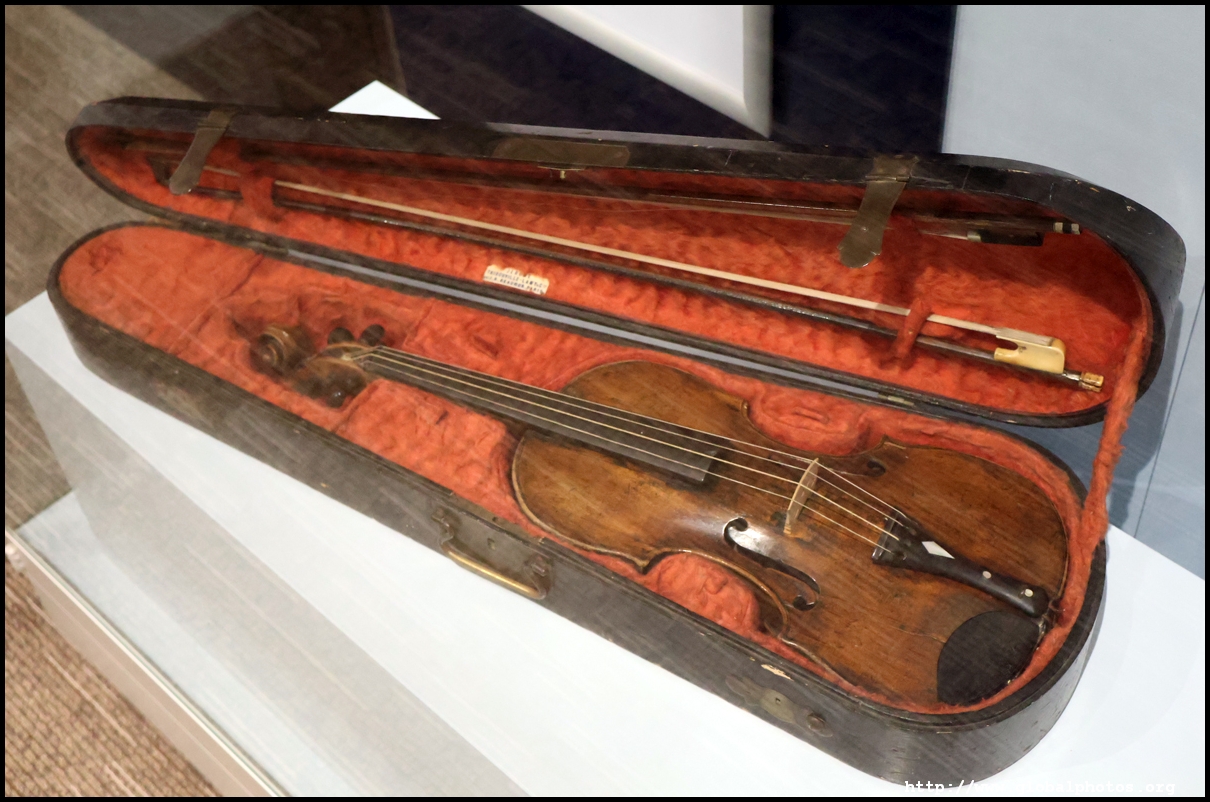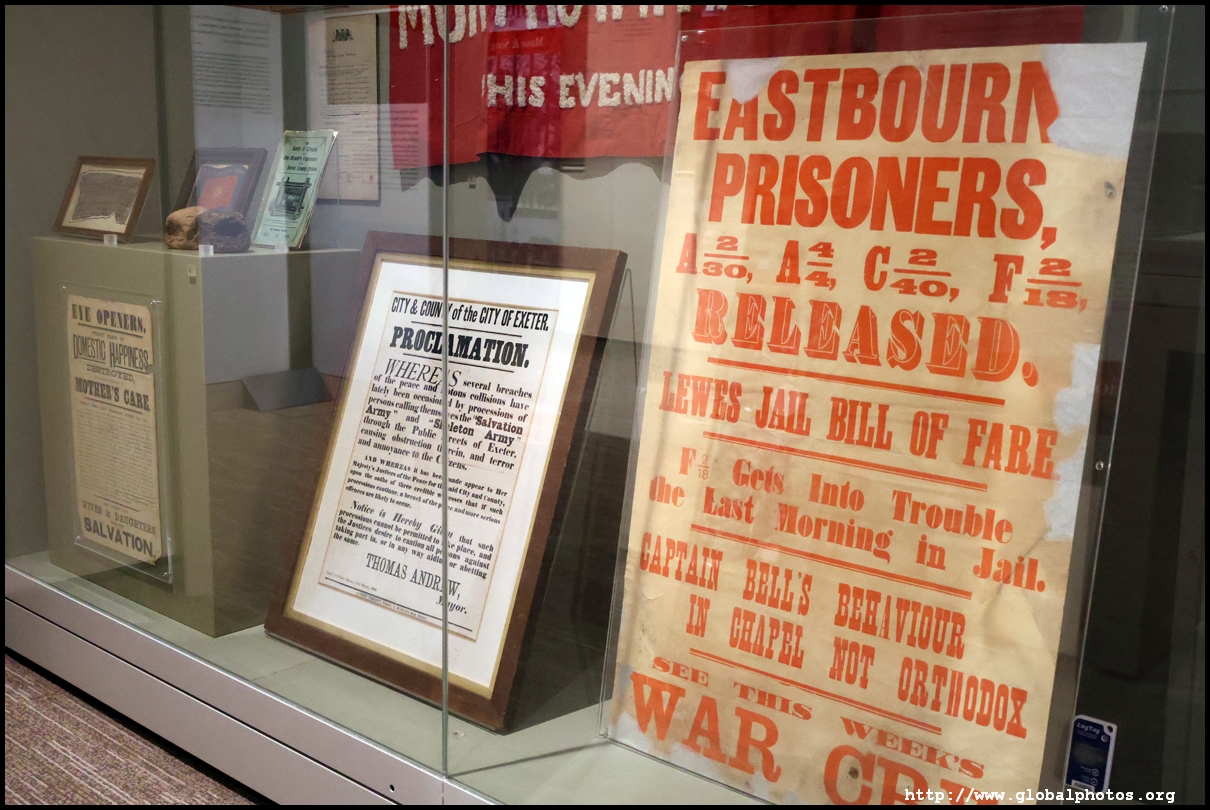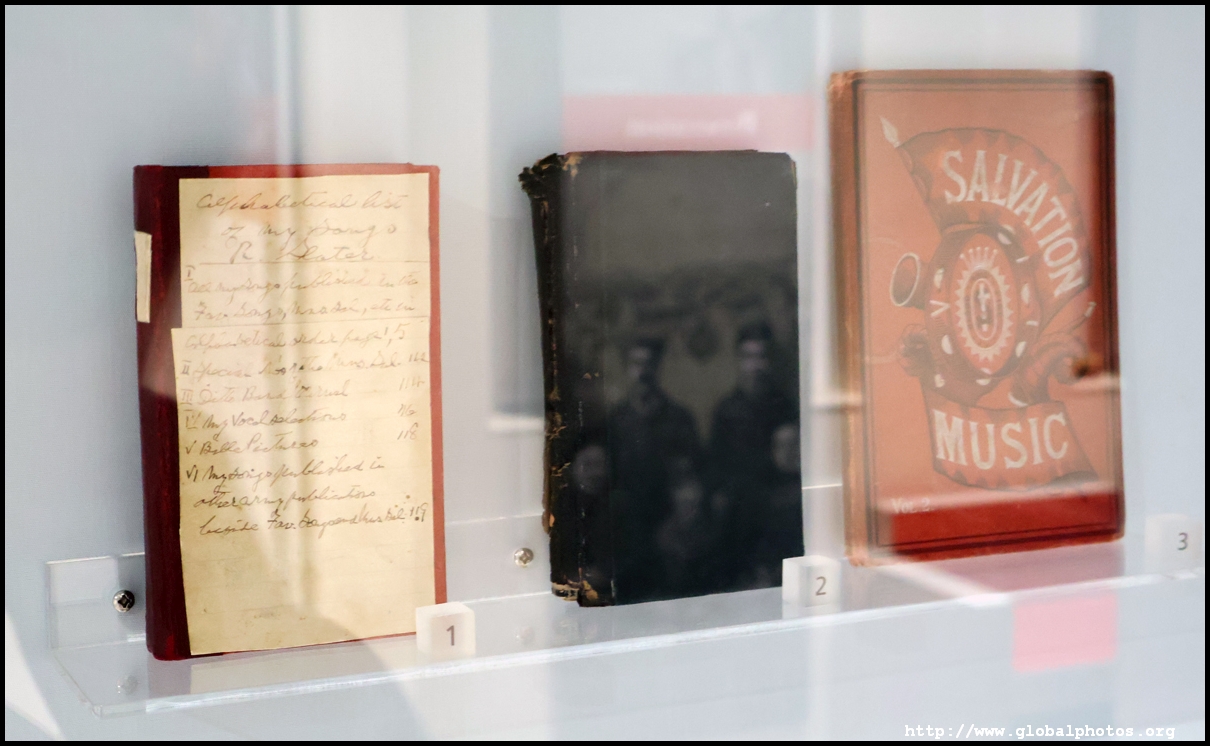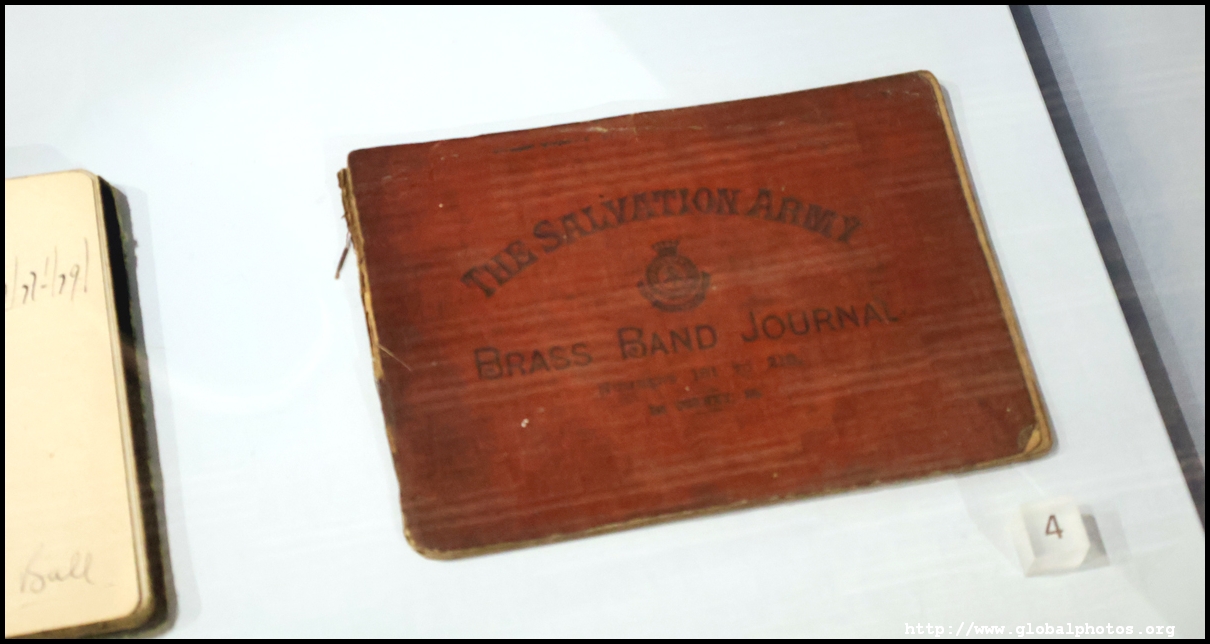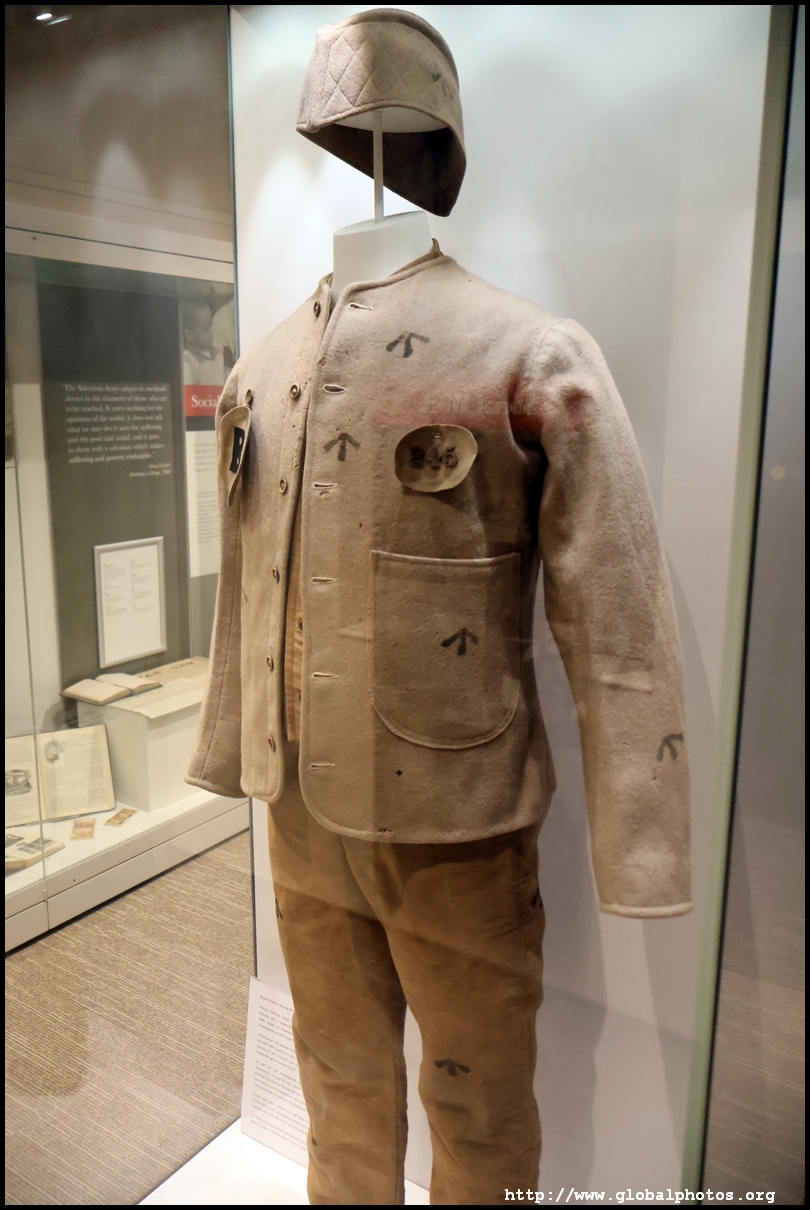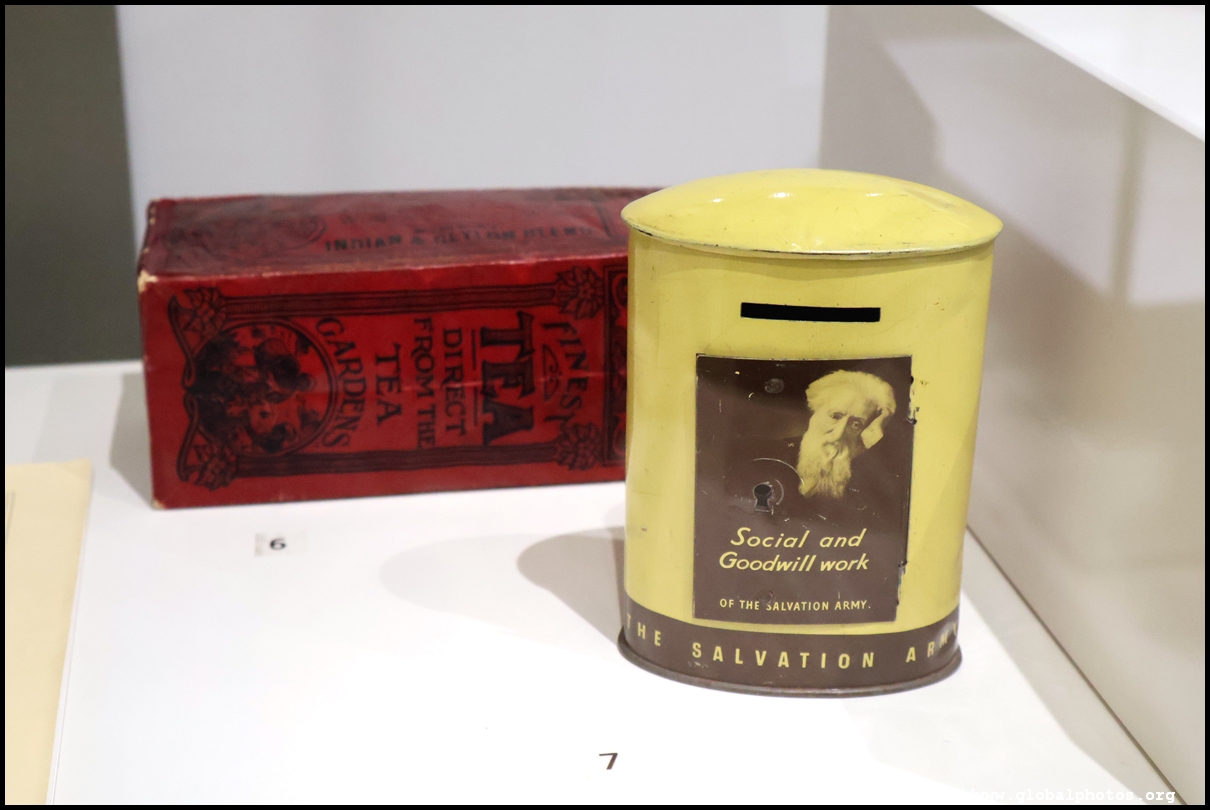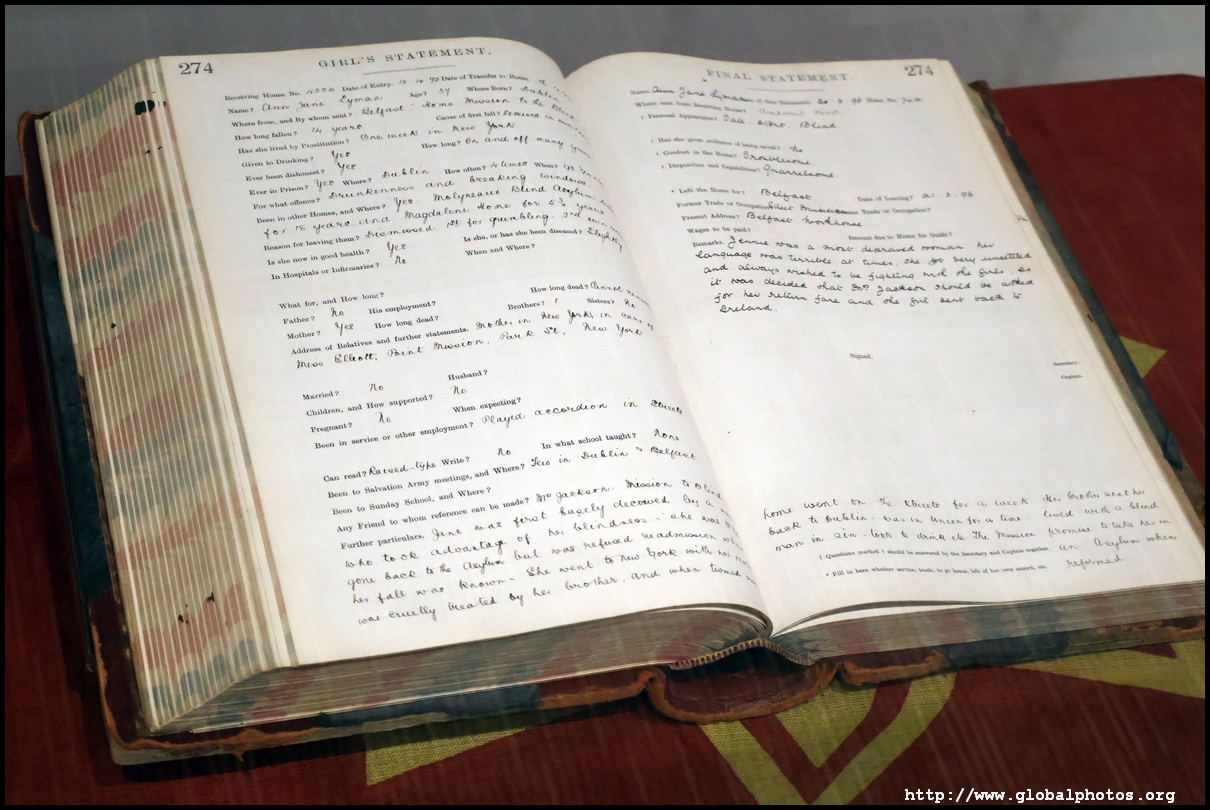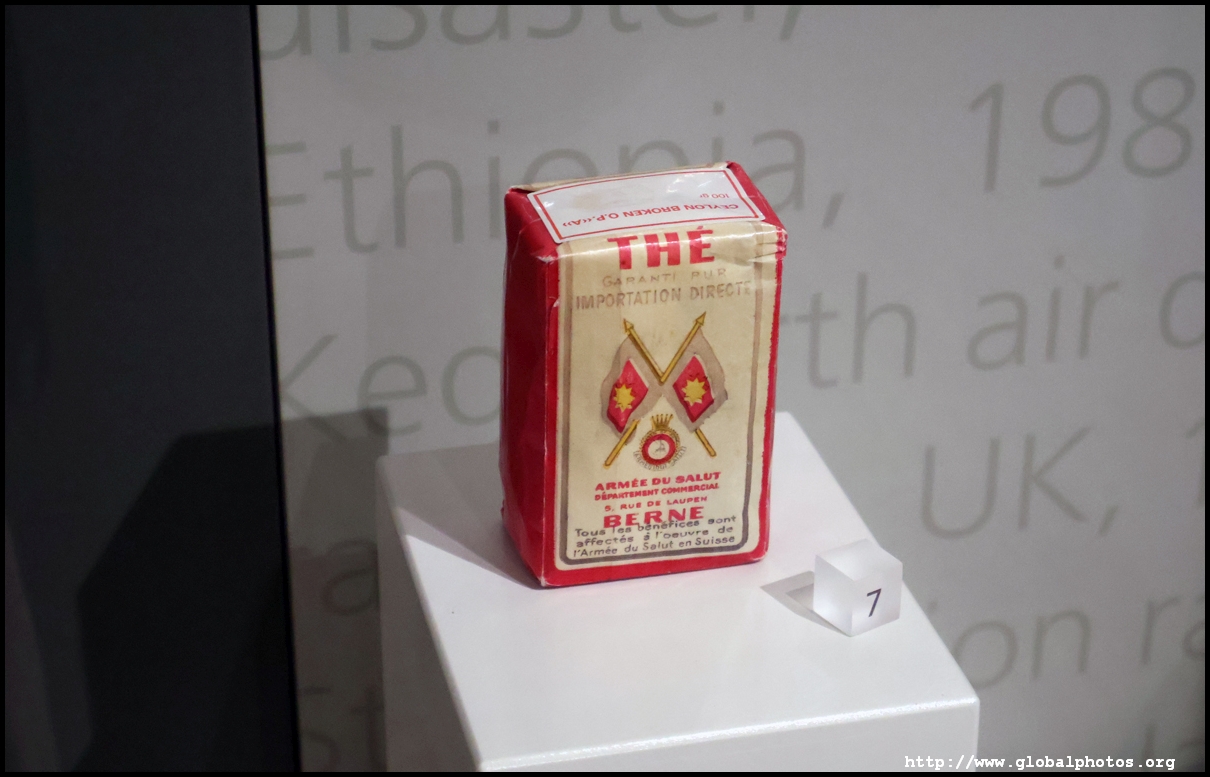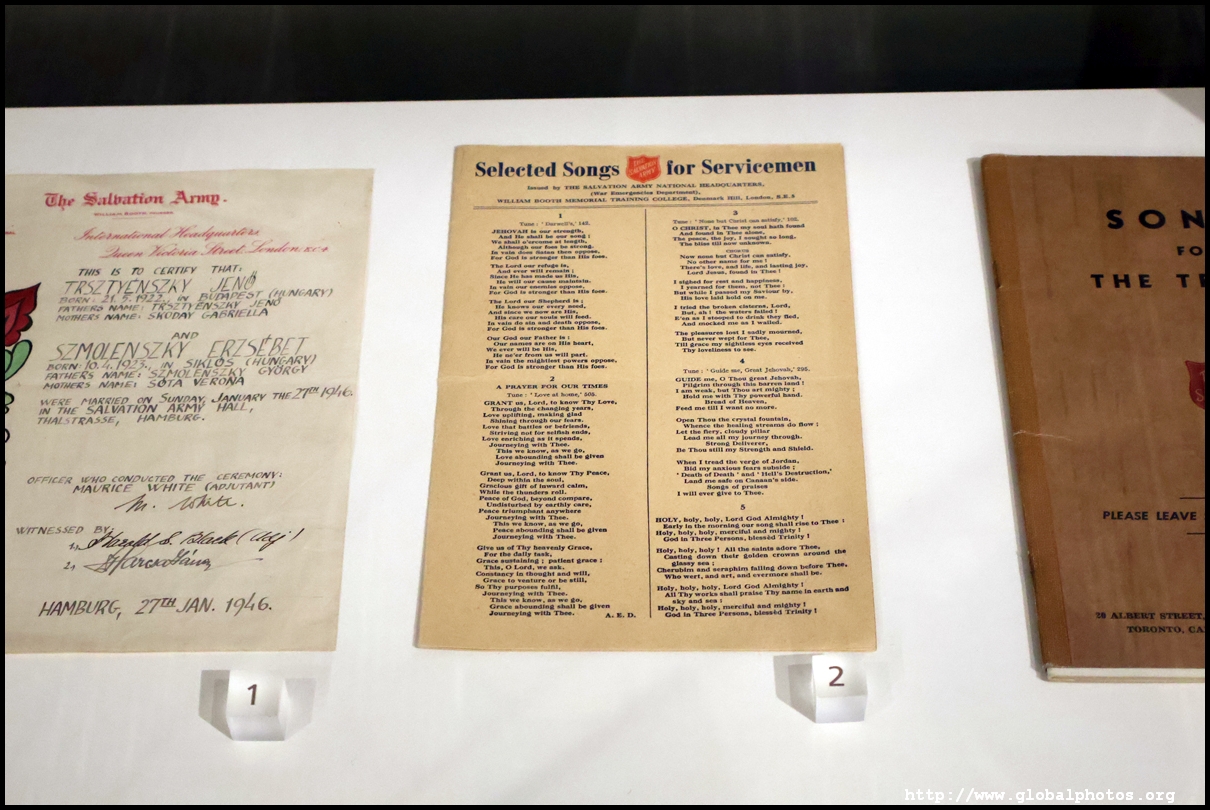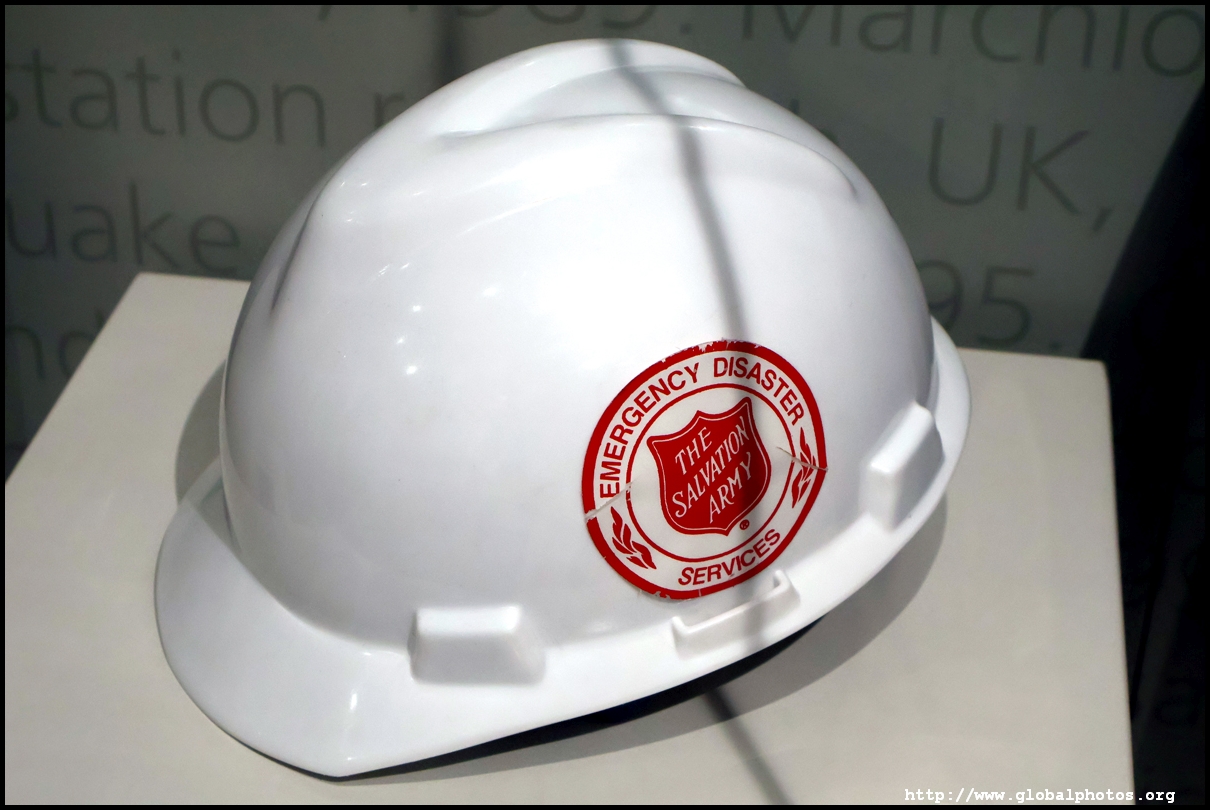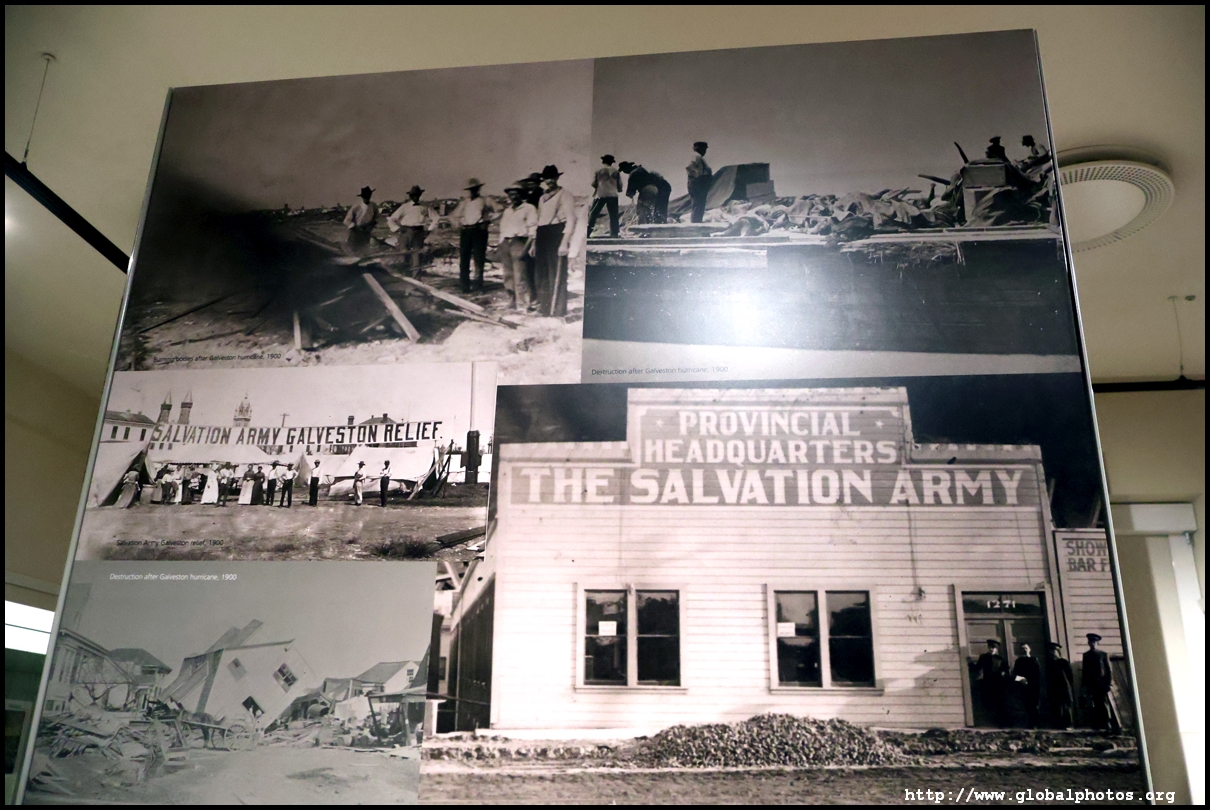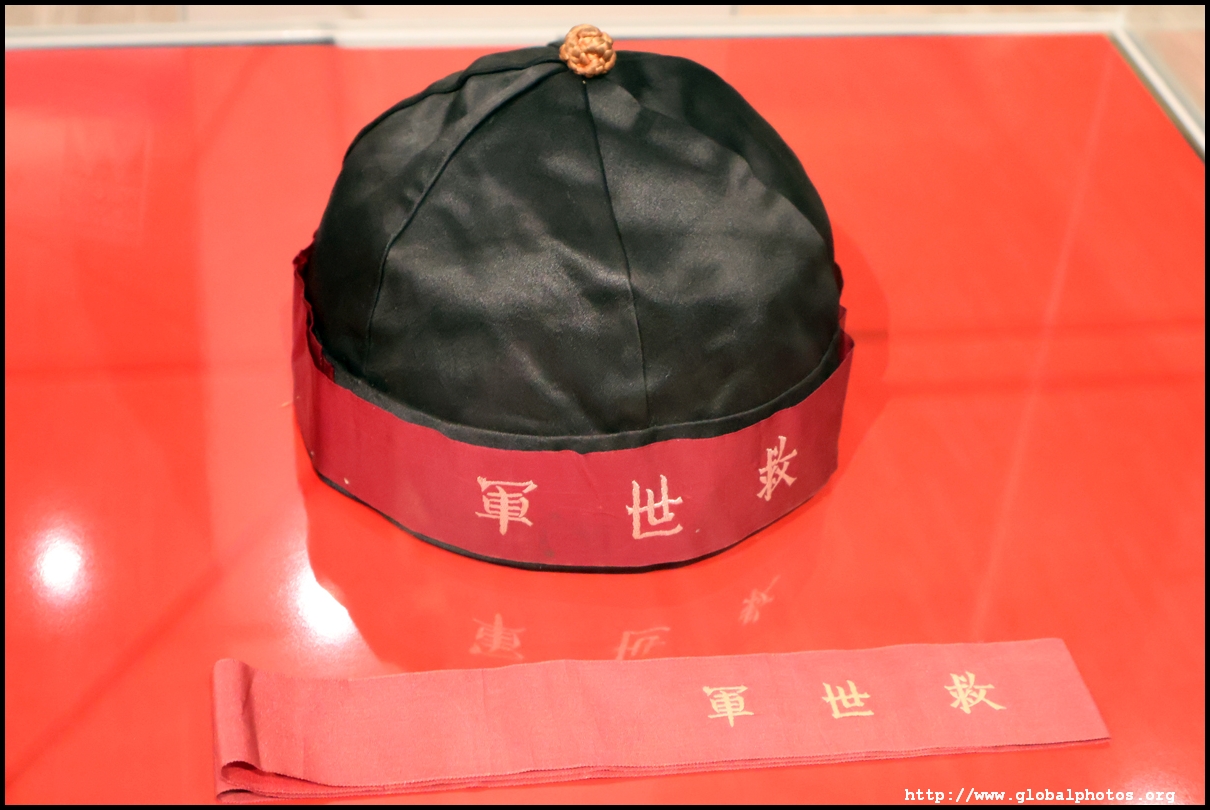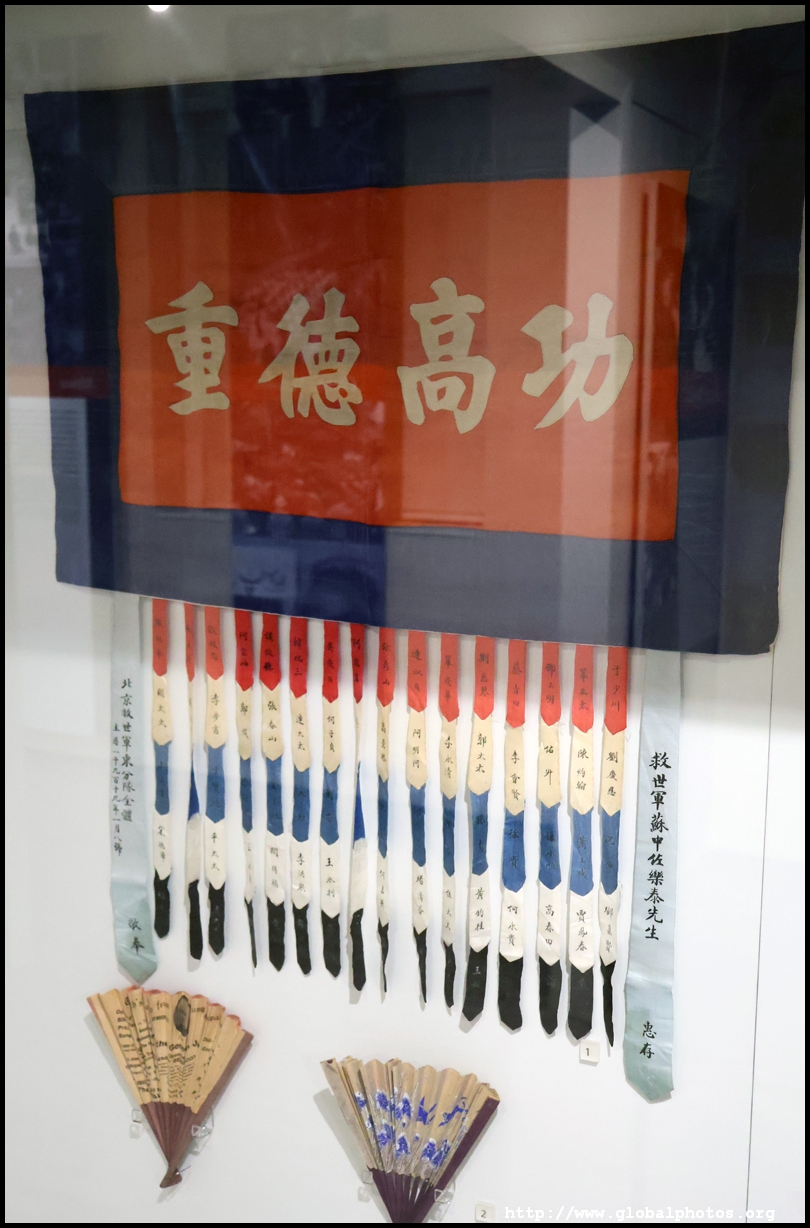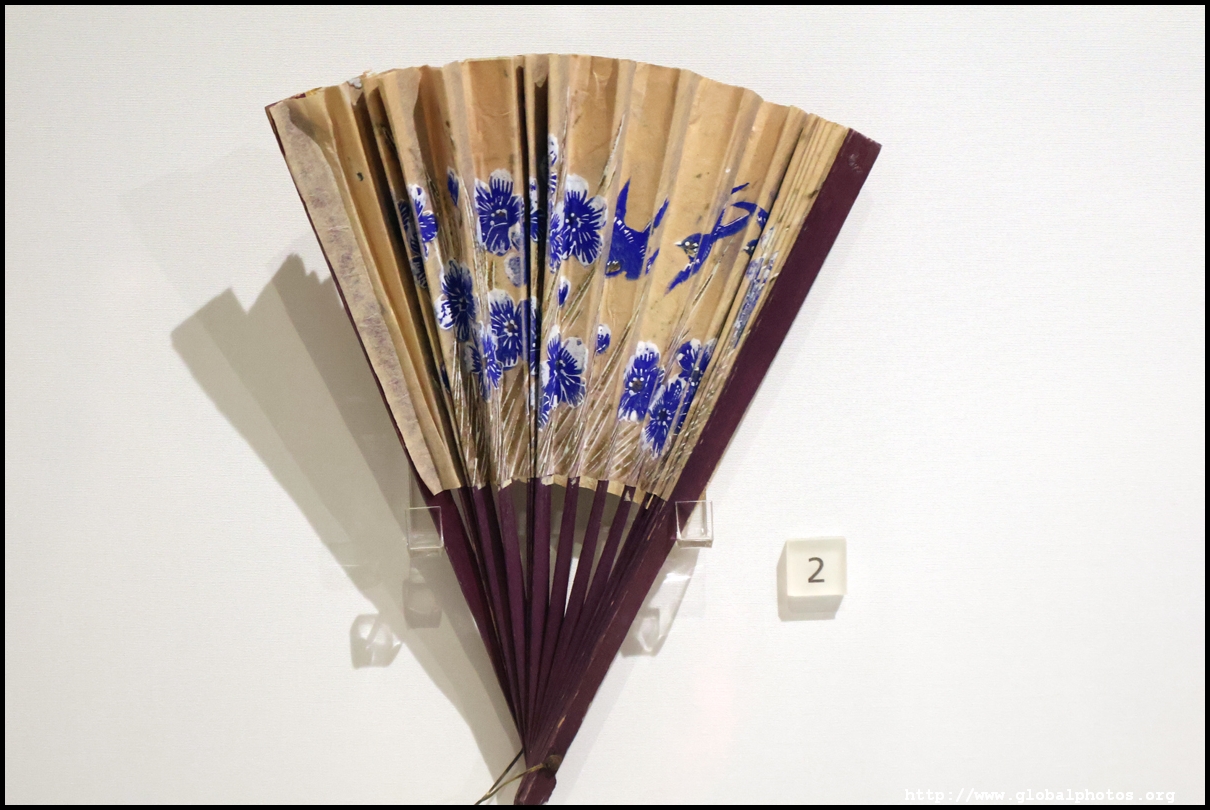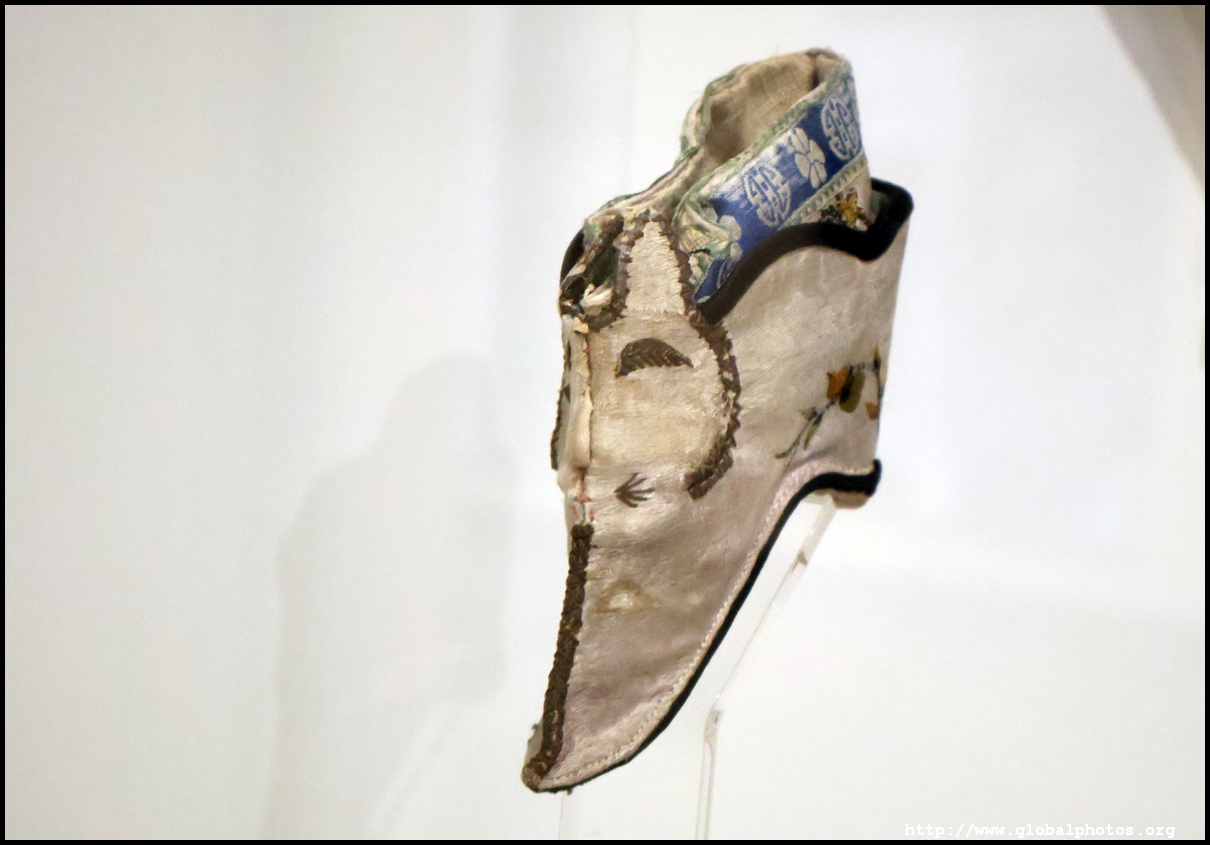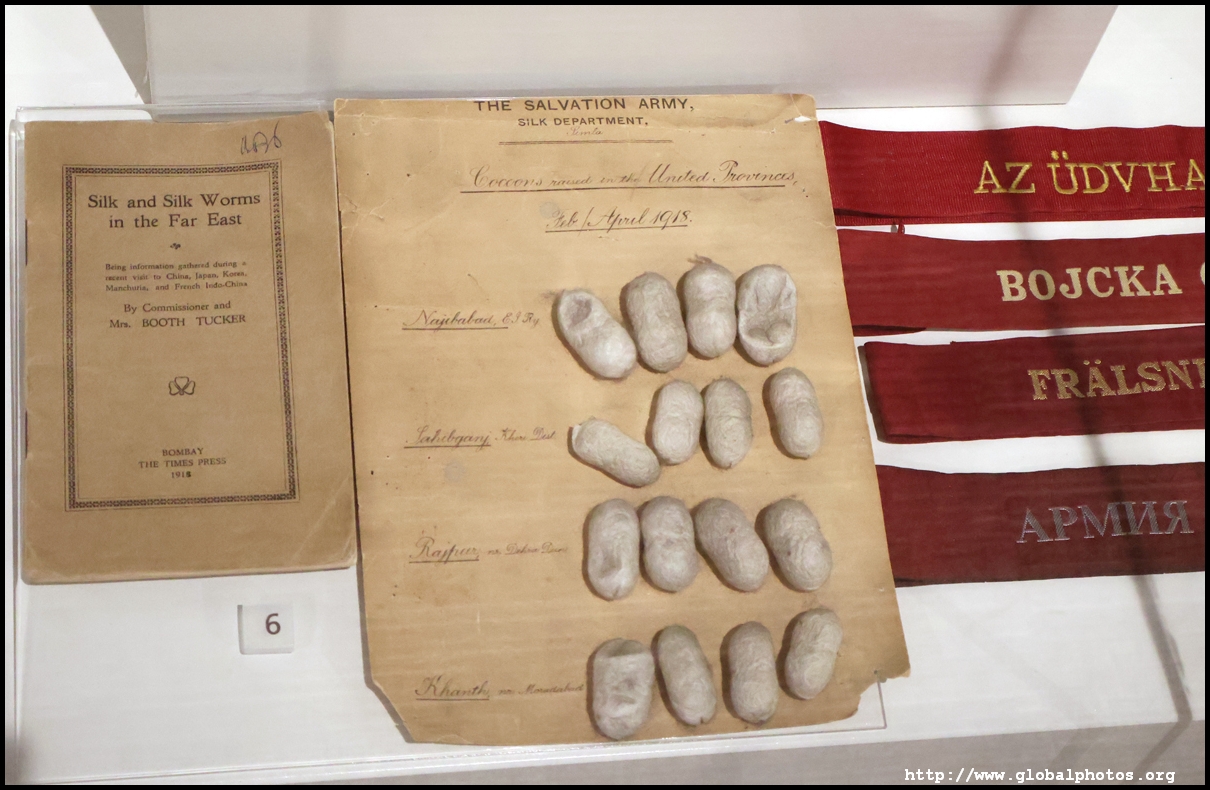London Photo Gallery - William Booth College
The Salvation Army started off in 1865 when William and Catherine Booth decided to live a life of practical Christianity by going out to meet the world. They helped East London's poor, giving shelter to the homeless, helping people trace their families, running soup kitchens, and rescuing women from prostitution or abuse. The name Salvation Army was adopted in 1878.Named after its co-founder, William Booth College opened in 1929 to train the Salvation Army.
On the third floor of its main building across the street from Denmark Hill Overground station is a small museum about its history, the problems it faced during the early years, and international work. Sign in at the front desk on the ground floor, grab your visitor's pass, and take the elevator up to begin your visit. I had the whole place to myself when I visited on a weekday.
Music plays an important role in the organization, with the band playing an important role at their open-air meetings during the early days. Brass instruments were favoured as in the military, with members encouraged to write songs and sing them to spread the message of salvation.
In the late 1870s, the Salvationists were attacked by "skeleton armies" along the southern English coast. Preaching against alcohol use, gambling, prostitution, and other inappropriate past times, it attracted opposition from the working class who didn't like clean living amidst an era of industrialization and poverty, where these vices offered an escape. The wealthy classes were also concerned, as the Salvationists' revolutionary beliefs at the time could jeopardize their economic interests that might result in calls for better pay and working conditions. The skeletons threw rotten eggs, sang obscene versions of their songs, or directed violence at banners and instruments. These battles would eventually escalate into riots, although local authorities rarely intervened, and viewed their open-air meetings being obstructions, breaching a law prohibiting processions with musical instruments on Sundays until Parliament repealed the law in 1888.
The Salvation Army even opened its own musical instrument factory in 1889, which initially assembled cornets and did repairs, and eventually expanding to make other brass instruments.
This prison uniform was worn by a supporter who was a newspaper editor and jailed during his investigation on juvenile prostitution in 1885.
On the left, the tin tokens from around 1900 were used in men's hostels to pay for meals.
Fundraising included selling tea (1920) and collecting donations using an oval lockable box (30s/40s).
During World War II, the Red Shield offered hostel, canteen, and club services for the army, as well as first aid support and a cup of tea for Londoners sheltering underground.
The last part of the exhibition showcases their humanitarian work and international expansion. However, some countries have banned the organization outright, such as China in 1953.
Further reading : BBC article - Menace to sobriety: When Salvationists fought Skeletons | |
To re-use these photos, please notify me by email : asiaglobe@yahoo.com.hk.

